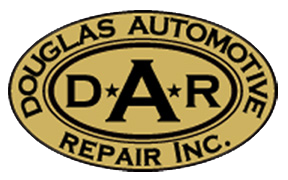Roadside air – especially along busy roads and highways – contains high levels of pollen, dust, soot and smog whose harmful effects are well documented. And children, with “young lungs”, are more sensitive to the effects of air pollution than adults. So if you are taking the kids to school or soccer practice with the windows rolled up the air quality inside a car often can be worse than the air outside – especially in heavy traffic.
To protect against the dangers of these pollutants, modern vehicles utilize a cabin air filter, which acts much like the filter in the home’s heating system – trapping dust, dirt and grime from the road and pumping clean air into the passenger compartment. Over time, however, the cabin air filter can get clogged and actually multiply the dangers associated with these pollutants when the vehicle’s heating and air conditioning system blows them into the closed interior with no avenue for escape.
An increasing number of vehicles are now equipped with cabin filters – even though most motorists don’t even know they have one. This filter must be clean and functioning well to ensure that the air entering the passenger compartment through the heating and air conditioning vent system is uncontaminated.
Which vehicles utilize cabin filters?
Recent data shows that more than 40 million vehicles on the road are equipped with cabin air filtration systems, yet many drivers have no idea that their vehicle either has one, or where it is located or what purpose it serves. Refer to your owner’s manual or check with us to see if your vehicle is equipped with one.
The cabin air filter is often referred to by various other names – pollen filter, interior air filter, air-conditioning filter, passenger compartment air filter, interior ventilation filter or dust filter.
Replacing the cabin air filter
If you plan on replacing the cabin filter in your vehicle yourself or have it done by an aftermarket professional, it is important to know that the installation time varies with the vehicle concerned. It can take as little as 5 to 10 minutes or run as high as 45 minutes to an hour, depending how difficult it is to reach.

the blower and the rest of the HVAC case.
Depending on the vehicle make and model you may find the cabin filter in different locations. A cabin air filter may be in the outside air intake, visible with the hood up and perhaps the cover lifted. Or, it will be located under the dash above the blower in the back section of the outside air intake – a location well protected from moisture – or between

If the filter is not immediately apparent with the hood open, another place to check would be behind the glove box – perhaps you’ll see an obviously removable (with a spring-tab or similar retainer) rectangular plastic cover. Next, look under the dash (on both the driver’s and passenger’s sides) for a removable plastic cover in the HVAC case. If you can remove its cover, look inside the HVAC case.
Installing the filter
Once you have the appropriate filter for the vehicle, follow the instruction sheet if one is included in the box
Replacing the filter at the glove box
A typical cabin filter replacement scenario at the glove box shows how routine this can be. For instance, many domestic and import vehicles place the cabin filter behind or under the glove box. Replacing it is about a 10-minute job on most vehicles. Here are the steps:
- Make sure the engine is off
- Enter the vehicle through the passenger door
- Remove two screws from hinged cover plate under the glove box
- Remove the cover plate by pulling out and down
- Remove used cabin filter by pulling straight down
- Install new cabin filter, making sure that the filter is placed with air flow markings in the correct position
- Reverse the procedure
Types of cabin air filters
Two kinds of cabin filters are found on vehicles today – the particulate cabin filter and the activated charcoal cabin filter.
The particulate cabin filter features a multi-layer design with three layers of superior mold-resistant filtration media – more pleats that provide a greater surface area for higher filtration capacity, foam perimeter gaskets and an injection-molded frame when specified by the vehicle manufacturer.
The activated charcoal cabin filter has all of the same characteristics as particulate filters, but goes a step further. Their additional layer of activated charcoal absorbs nearly 100 percent of toxic and foul-smelling gases such as ozone, nitrogen oxide, sulfur dioxide and hydrocarbons. An additional cover layer makes for extra protection.
In many cases both particulate type and activated charcoal type cabin filters are available for the same vehicle. For these vehicles, you can replace a used cabin filter with either a particulate cabin filter or activated charcoal cabin filter – irrespective of what type was originally installed by the vehicle manufacturer. Like the home furnace filter, the cabin air filter in your vehicle needs to be changed. We recommend that the cabin air filter be changed every 12,000 to 18,000 miles or as specified by your manufacturer.
While replacing the cabin filter, Douglas Automotive Repair recommends removing all debris that might have collected in or around the cabin filter housing to ensure a tight seal for maximum filtration. Most important, make sure the replacement cabin filter is from a quality supplier and will constantly filter out dust, dirt, pollen, and other harmful.
Give us a call today to have your Cabin Air Filter checked!This entry was posted in Cabin Air Filter, Vehicle Maintenance and tagged Cabin Air Filter, Vehicle Maintenance on October 8, 2015.
